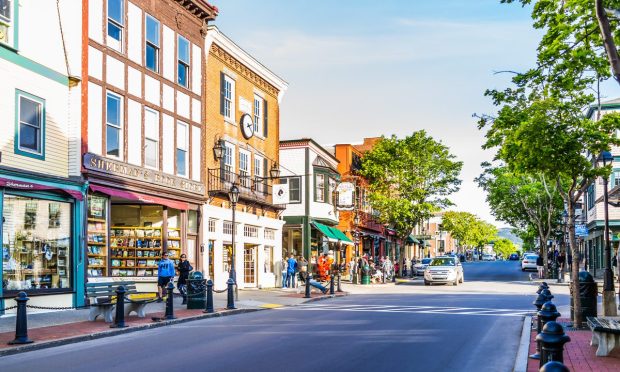PYMNTS’ Merchant Index Finds Main Street SMBs Taking Different Paths to Recovery

Big wins for small business seem harder to come by as global enterprises dominate the news and our everyday lives, but small and medium-sized businesses (SMBs) are a pandemic-era success story that, with miles still to go, are proving remarkably resilient.
In the latest installment in PYMNTS’ Pandenomics series, The Main Street Merchant Index: How SMBs Are Faring In Their Recovery Efforts, researchers found that past is prologue, stating, “Main Street SMBs are and have been outperforming the broader business sector for more than a decade. Their average MSI score has been higher than the national average dating all the way back to 2007, and the pandemic did not change that. Even at their lowest point, Main Street SMBs’ MSI score was 6.4 percent higher than that of the average U.S. business.”
While they took a harder hit than virtually any other class of business during the worst of COVID-19 lockdowns and disruptions to shopping routines, the new report notes, “Main Street SMBs also managed to recover from this shock faster than the average business. Their MSI score returned to its pre-pandemic level of 127 by Q4 2021, while the average U.S. business’s score was still 0.9 percent lower than it had been before the economic downturn. In other words, Main Street SMBs are, in some ways, even healthier than they were before the pandemic’s onset. “

See: The Main Street Merchant Index: How SMBs Are Faring In Their Recovery Efforts
Recovery Differs by Region
Differences in how the pandemic played out among SMBs in different regions of the U.S. makes for a fascinating case study across regional economies, business type and other variables.
Per the new report, “It took the average Main Street SMB roughly six months to regain the financial footing they had prior to the pandemic, earning about the same MSI score in Q4 2020 as they did in Q1 2020. The average Main Street SMB in the Northeast did not fully recover until Q2 2021. In other words, it took Northeastern Main Street SMBs nearly twice as long as the average region to regain ground lost during the pandemic’s first three months.”
As Main Street businesses in the Northeast struggled on longer, “Main Streets in the South and the Southwest have fared better than those in other regions, by contrast. Main Street SMBs in the South saw their MSI score slip just 7.4 percent between Q1 and Q2 2020, while the MSI score of those in the Southwest fell 7 percent on average.”
Researchers uncovered other interesting trends within regional data, including differences in average number of employees, to a wage gap that is a growing pandemic-era trend.
“Main Street SMBs in the Pacific and Mountain States employ fewer workers than those in any other region,” per Pandenomics, “but they also pay those workers far more than is seen in other regions. Pacific Main Street SMBs employ about 95 percent as many workers as they did in Q1 2020, while those in the Mountain States employ 96 percent as many workers as they did in Q1 2020. At the same time, Pacific Main Street SMBs pay their workers 6 percent higher wages than they did in Q1 2020.” Those in Mountain States pay workers 10 percent more.

Read: The Main Street Merchant Index: How SMBs Are Faring In Their Recovery Efforts
Main Street’s Comeback by Business Sector
As geography plays a role in the Main Street recovery, so too does business sector.
According to The Main Street Merchant Index: How SMBs Are Faring In Their Recovery Efforts, “Restaurants on Main Street recovered slower than the rest. Not only is the average Main Street restaurant still 21 percent less stable than it was prior to Q2 2020, but its economic health is actually still deteriorating.”
Local gyms and fitness establishments similarly saw average MSI scores fall 41 percent between Q1 and Q2 2020, “and that level is still 13 percent lower than it was in Q1 2020.”
There’s a silver lining, which is strength in professional services.
“A close look at the wages and employment levels in the professional services sector reveals just how well their businesses have fared compared to other segments,” per Pandenomics.
“Professional services firms employ 1.9 percent more workers now than they did in Q1 2020, and they pay those workers 8 percent more than they did at that time as well. It is therefore clear that professional services SMBs have emerged as the clear “winner” of the past 18 months, with their businesses being stronger and more economically stable than ever.”

See: The Main Street Merchant Index: How SMBs Are Faring In Their Recovery Efforts
